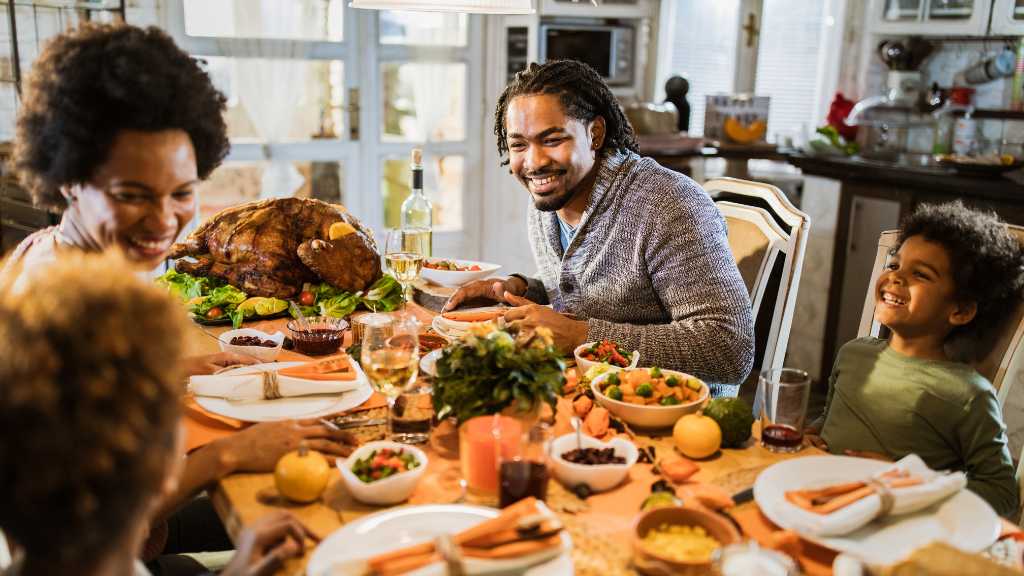Table of Contents
Thanksgiving can be hectic for children with Autism Spectrum Disorder (ASD), but with careful planning, you can have an autism-friendly Thanksgiving. The day can be full of stimuli like loud noises, breaks in routine, and a sense of encroachment on a child’s space and belongings. This excitement may culminate in a feeling of being overwhelmed. However, it can also be an unparalleled time to forge new memories amidst merriment, family, and food.
With planning, every parent can ensure their child is comfortable and nurtured this holiday season by making an autism-friendly Thanksgiving! Celebrating an autism-friendly Thanksgiving builds positive associations that last a lifetime and helps your child feel valued!
Autism-friendly Thanksgiving and Setting Expectations

Perhaps the biggest hurdle of Thanksgiving for the neurodivergent is the disruption of what is familiar or their typical way of navigating everyday tasks. Celebrating an Autism-friendly Thanksgiving involves preparing your child early for the holiday. Just as you might explain an event to a friend attending for the first time, preparing a child with a forecast of the day is essential. This preparation process entails explaining the holiday, planning, and communicating. Here are four tips to help you create an autism-friendly Thanksgiving.
1. Explain Thanksgiving Day
Have fun describing the day. Let them know the reason for gathering, the history of Thanksgiving, and what it might represent to share a meal with those you love the most. Perhaps it’s not so different from a special day when they get to eat their favorite food or visit their favorite restaurant. Establish right away that this is a relaxing day to celebrate what makes them happiest in life and what makes them thankful.
2. Describe What the Day Involves
With the preliminaries out of the way, try to schedule and eliminate as many surprises as possible. Decorating, a busy kitchen, music, guests, lively conversation, explain all step by step to your child. Carefully walk through the plans: when you begin cooking, when it is time to get dressed, when guests are expected, what the seating will be like, and which foods will be served.
If you are traveling, make them aware of the itinerary, car, or plane ride length. Entice them with some details about the travel process. Any landmarks along the way worth noticing or neat technical facts about an airplane could turn a trip into a positive experience.
Most importantly, set aside a private space, and always let them know they can excuse themselves if they get overwhelmed. Through patient communication, you can build a sense that Thanksgiving is not an interruption but a supplement to their day and a cheerful time when they get to do more of what they want.
3. Let Them Know Who They Will See
Interacting with different people a neurodivergent child is not acquainted with can lead to sensory overload. Part of setting expectations is letting them know that people will speak to them during Thanksgiving.
Creating a social story can be a powerful way to help children with autism prepare for the excitement and changes that come with Thanksgiving and other holidays. According to the Children’s Hospital of Philadelphia, writing a social story that outlines the day’s events; from waking up and choosing holiday clothes to car rides, seeing family, and enjoying dinner, can ease anxiety and build predictability. Including photos of familiar faces, favorite foods, or even activities like watching the parade or saying goodbye helps your child visualize what to expect.
4. Expect the Unexpected
You can only account for some things. There will be mistakes, misbehavior, and guests that get caught up in the season and don’t always follow the rules. Remain patient, don’t lose your cool, and remember breaking the ice is a process. An autistic child needs time to get used to a new environment and leeway to explore it in their preferred way.
You might be pleasantly surprised at what new traditions your family can invent by letting your child personalize the holiday. Are formal clothes too stodgy? Casual evening wear like slippers and pajamas can create a welcoming atmosphere.
Be content and take pride in making the correct preparations; afterward, don’t feel stressed when some deviation happens. The natural course of events, charming interactions, shared playtime, and conversations can lead to rewarding experiences for your child and guests. Thanksgiving can be an opportunity to grow and strengthen bonds, discover a new favorite uncle, or learn that a family member is an excellent cook.
5. Communicate Boundaries and Prepare Guests Ahead of Time
One of the best ways to create an autism-friendly Thanksgiving is through open communication. Talk with your child about who will be visiting, and give them space to share how they feel about interacting. Encourage them to showcase their unique interests, whether that’s dinosaurs, space, or technology, and remind them it’s always okay to take a break if socializing feels overwhelming.
At the same time, prepare your guests by setting clear boundaries and expectations. Ask them to keep noise levels comfortable, avoid unexpected physical contact like hugs, and respect your child’s personal space. If other children are attending, encourage their parents to explain how to play respectfully and patiently. When everyone understands and honors these boundaries, the celebration becomes more inclusive, relaxed, and enjoyable for all.
ABA Centers of Florida and Autism-Friendly Thanksgiving
ABA Centers of Florida understands that the holidays can be a demanding experience for many families with children on the spectrum. Our ABA professionals work with families to help children develop the skills they need to enjoy holidays like Thanksgiving to the fullest! For more information about our ABA services and how we can support your family, call us at (772) 773-1975 or visit ABACentersFL.com.








